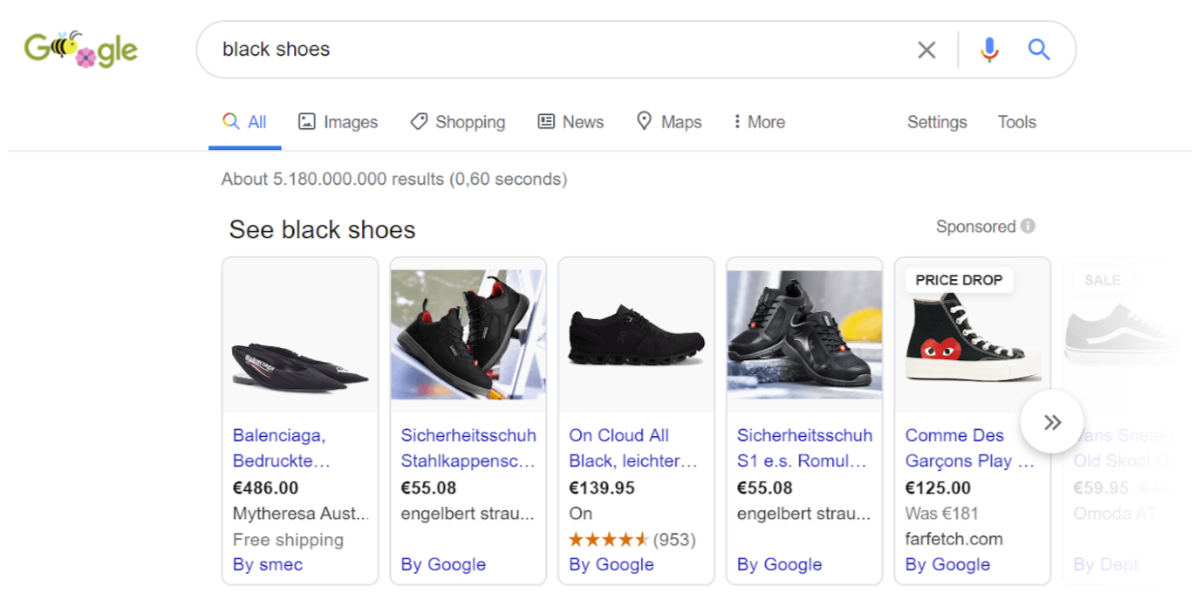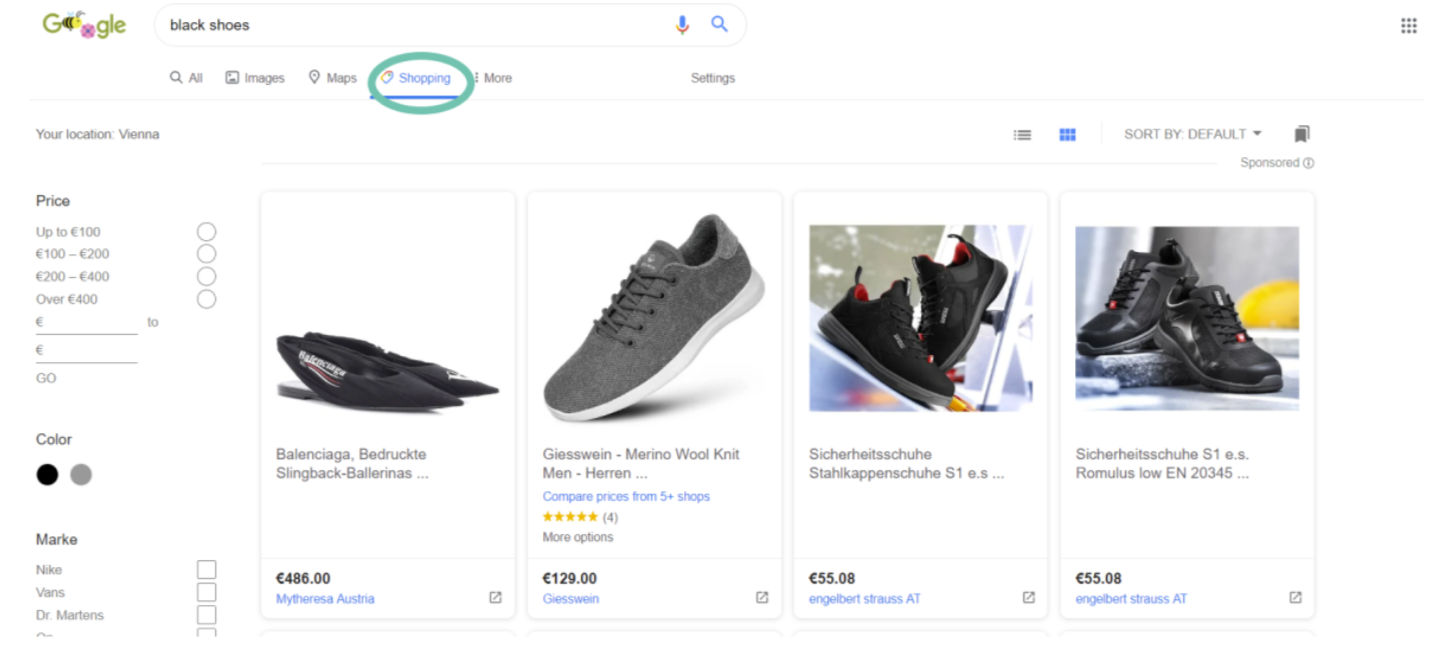Google Shopping Guide 2020: Setting up effective campaigns & free listing
Table of Content
With this statement, Google's President of Commerce, Bill Ready, caused a considerable stir. The major change for the Google Shopping platform is that it will now let any business owner that sells products online list their inventory for free. Usually, an e-commerce operation would need to pay for ad placement on Google Shopping. Free listing options and increased sales without additional marketing costs will bolster Google’s role within the e-commerce sphere, as many online retailers already actively use this platform to increase sales and generate revenue.
In addition, a partnership with the popular payment method provider Paypal, where Ready was previously COO, was announced, as well as closer cooperation with shop systems such as Shopify and WooCommerce. This step by Google should now convince even more online merchants to use the Google Shopping Feed because the entry is comparatively simple and can be implemented quickly. In our ultimate Google Shopping Guide for 2020 we aim at providing you the hands-on information on the following topics:

E-commerce, a business segment that has experienced a virtually unstoppable rise in recent years, is one of the few industries that are likely to emerge even stronger from the 2020 corona crisis, as was the case in Asian countries in 2003 after the SARS outbreak. One thing is certain, e-commerce will suffer less from the effects than most other business segments.
However, given the current restrictions due to the COVID-19 outbreak, brick & mortar retailers have it way worse than their fellow online retailers. Accordingly, many retailers already opened an online shop and many more will follow. With the Google Shopping platform, formerly known as Google Product Search, Google Products, and Froogle, the American giant wants to take a bigger slice of the e-commerce cake.
For shop operators, regardless of whether the online shop has just been launched recently or has been active for a long period of time, the question, of how to make their products available to a large number of potential buyers in the best possible way, persists. To address these questions, you could try your fortune making your online shop well-known by funneling heaps of cash into marketing, or you can list your products in one or multiple well-established online marketplaces.
On online marketplaces such as Amazon, eBay, or Rakuten, however, the products are offered quasi generically. In other words, your brand doesn't really matter. As a merchant, you have to conscientiously consider whether you want to engage in this kind of "coopetition", i.e. a balancing act between cooperation and competition. Another alternative is Google Shopping, which on the one hand offers the wide reach of online marketplaces, but on the other hand does not, or only slightly, hinder the individuality of online shops.
What is Google Shopping?
From the buyer's perspective
Google Shopping enables potential buyers to browse, quickly find, and compare products. Images of the products, as well as prices and the respective brand, are displayed at a glance. This, in most cases, conveys the most important information of a search query quickly and easily.
One can distinguish between two types of advertisements. The first type is a query in the search engine result page (SERP). These can be displayed at the top.

The second type is a separate "Shopping" tab from Google. In that case, the products are displayed as follows.

However, it is important to consider former Google employee and CEO of adablo, Gerasimos Nikolopoulosm's insight, that only 10% of sales are made via the Shopping Tab. This can be explained by the significantly lower traffic on the site.
Currently, it can be accessed from more than 120 countries, including Germany, UK, France, and the Netherlands. This service is free, however, buyers must be logged in with a personal Google account to make a purchase. In general, there is a greater focus on personalization than on competing services from other marketplaces. There are personalized suggestions, for example, which account for 35% of purchases at Amazon and 75% of content consumption on Netflix. In addition, it is also possible to track prices and only search for regional products.
From a dealer's perspective
From the perspective of e-commerce entrepreneurs, Google Shopping can be an important channel to strengthen the online business and increase sales. Since 2012, the platform has been using a PPC system (Pay per Click), meaning that merchants pay a certain amount per click for each of their products that they actively advertise on this platform.
Google's attempt to counteract Amazon's dominance in the e-commerce sector gives many companies the opportunity to offer products on a platform without giving up the shop’s individuality. By clicking on the products, visitors can be redirected to the retailers' online shops. Furthermore, the local search offered can be an advantage for many merchants in order not to get into a price war with the strong, cheap foreign competition.
The megatrend of sustainability in e-commerce and many other areas play a major role in this context as well. Another helpful tool for any company that sells products through channels on the Internet is Google Trends. One can get an overview of specific search terms within seconds and it is quick and easy to evaluate existing queries of various categories in different countries and regions.

Why do e-commerce companies use Google Shopping?
It should be obvious by now that Google Shopping has a lot of potential. Thus, it represents an opportunity for many small and medium-sized companies, but also for large retailers. Now, what exactly are the advantages over similar platforms and online marketplaces?
Pictures often say more than 1000 words
Humans are visual creatures, therefore images are preferred to text. If the price is also visible at the first glance, as in the case of Google Shopping, there might already be enough information available for a customer to make a purchase. Therefore, the conversion rate, i.e. the actual purchases after a click, is much higher than compared to the conventional offers.
Through the Pay per Click system, you save a large number of clicks that do not lead to a purchase, compared to other platforms. This makes it possible to increase the Return on Ad Spend (ROAS), i.e. the rate of sales divided by the costs of a certain marketing channel.
Alternative to Amazon
Especially online retailers who sell high-quality goods want to be perceived as their own brand and not one of the thousands of nameless products available on online marketplaces. In contrast to Amazon, for example, Google Shopping offers the possibility of directing more traffic to your own website and thus potentially generating additional purchases. In addition, more than three-thirds of online shoppers start with a search on Google.
Conversion rate optimization using Google Shopping
Visitors to Google Shopping are usually looking for specific items and are therefore naturally more inclined to buy than the average Internet visitor. By clearly presenting the most important product features at a first glance, the decision-making process for online shoppers can be made easier. This is one of the reasons Google Shopping ads generate 30% better conversion rates than text-based ads.
The conversion rate can also be increased through increased trust. Especially smaller and unknown shops often struggle with customer distrust. As a result, many shoppers decide against buying from these online shops and prefer to buy from Amazon or similar. Thanks to the guarantee that Google provides, the risk for the buyer is reduced and a barrier to purchase is eliminated.
Similarly, the money-back guarantee and simplified returns are trust-building measures that can have a positive effect on trust.
Easy to manage your product listings
This means that online traders can quickly and easily control which products are offered at which prices. In addition, the costs can be planned down to the last cent. Expenses can also be adjusted hassle-free.
How to add products to Google Shopping
Ready to give it a shot? If yes, here are the most important steps towards setting up your account manually. If you have a very large number of products, it is worth considering using a Google Data feed tool.
To get started, you have to first create a Google Merchant Center account to set up your product feed there. This is information that Google uses to show your products to the right people. With some shop systems, such as Shopify, Google Feeds can be generated automatically. It is also important to optimize your product images and to optimize them on your own website. Google uses the images of the websites of the respective merchant. As indicated above, the images are, besides the price, the decisive factor between purchase or no click. This is obviously due to the important first impression that is formed online in under 3 seconds. In addition, Google also checks the quality - if it is too low, the campaign will be rejected.
This product feed is very important for your future performance. One of the reasons for this is that Google Shopping Ads, unlike Google Adwords, for example, does not allow you to bid directly on certain keywords. In this case, Google collects the information from your product feed. For this reason, it is essential to take a few minutes to optimize it. Otherwise, Google will not display ads of your products, because it does not know for which queries they are suitable. Therefore pay special attention to the following:- Fitting titles
- A good description
- The appropriate categories
- The use of Structured Markups
- Adapt your product data to the specifications of Google
- Match all product information to Google's content requirements
- Find a process for keeping the content up-to-date
The next step is to connect your Google AdWords account. Now is also the perfect time to start your first Google Shopping campaign. However, be prepared that you will have to place higher bids in the beginning, because Google Shopping is a learning platform and therefore initially needs data to understand your products better. Nevertheless, after a short time, you can start to analyze important metrics and adjust your offer accordingly. As you know, this is a mixture of science, instinct, and experience. Continue to refine your targeting and bidding strategy to optimize your performance. The perfect procedure for this varies from shop to shop and from product to product.

Use Google Shopping free of charge
So what about the free listing on Google Shopping? This will be possible starting at the end of April and thus gives many smaller online shops the opportunity to list products for the first time. Nevertheless, also larger and already active e-commerce companies will benefit from this because advertising funds can be used elsewhere. The Google Shopping Tab will work similarly to a SERP search. A limited number of paid contributions, marked as ads, will be displayed above and below the organic listings. It is also worth noting that Google will implement the measures in the USA first. The free service is to be offered from the end of April 2020 there, while Google promises a global rollout by the end of the year.
How to use Google Shopping free of charge
For merchants who already have a Merchant Center and Google Shopping Ads, the changes will be made automatically as soon as they become active in the respective countries. For merchant center newcomers, it will not be necessary to be active in Shopping Ads in the future to benefit from the advantages. Rather, merchants can already log into Google surface during the registration process at Google Merchant Center and start creating a product feed.
Conclusion
In this article, we highlighted what Google Shopping is, emphasized the great potential for e-commerce entrepreneurs, and explained how you can start your first Google Shopping Ads campaign. In addition, Google will soon make free listing possible, which will provide further exciting opportunities for ambitious online shop owners and e-commerce companies. We firmly believe there is nothing that stands in your way in your quest to achieve additional sales via additional sales channels. We wish you good luck and especially success with this project.